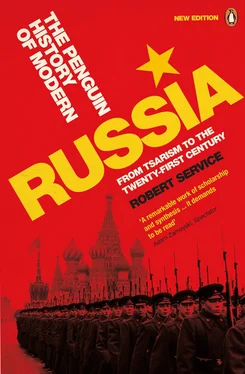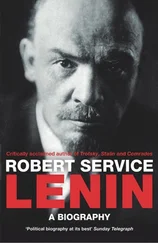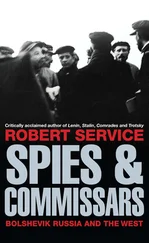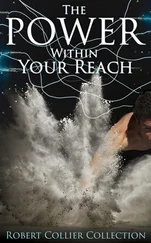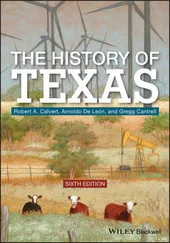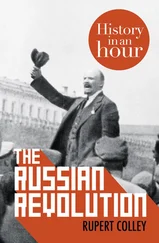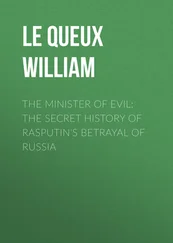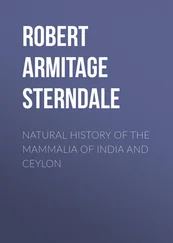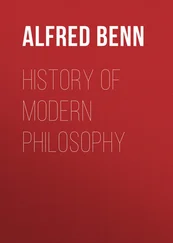And yet the intellectuals were remote from agreeing what they meant by Russianness. Indeed many of them abhorred the discourse of national distinctiveness. While criticizing the imperial nature of the state, they disliked the thought of breaking it up into several nation-states; instead they pondered how to create a multinational state which would deny privileges to any particular nation. Anti-nationalism was especially characteristic of the socialists; but several leading liberals, too, refused to invoke ideas of Russian nationalism.
It was left to far-right public figures, including some bishops of the Russian Orthodox Church, to argue for the interests of ethnic Russians at the expense of the other peoples of the Russian Empire. Several monarchist organizations came into existence after 1905 which sought to promote this case. The most influential of them was the Union of the Russian People, which had the undisguised support of Nicholas and his family. 14Such organizations called for the unconditional restoration of autocracy. They lauded the tsar, the Russian Orthodox Church and ‘the simple people’. They hated the Jews, whom they blamed for all the recent disturbances in the empire. They helped to form gangs, usually known as the Black Hundreds, which carried out bloody pogroms against Jewish communities in the western borderlands. By stirring up a xenophobic hysteria, they aimed to reunite the tsar and the Russian people.
After his initial declaration of sympathy for the Union of the Russian people, Nicholas took a more measured public stance. He left it to the Union to do what it could. But he was a tsar. He was far too austere to become a rabble-rouser, and his wish to be respected by fellow monarchs abroad was undiminished. Nothing done by Nicholas had an entirely clear purpose or consistent implementation.
Among Nicholas’s inhibitions was the fact that he could not feel confident about the loyalty of his Russian subjects. The Imperial state oppressed Russian peasants, soldiers and workers as well as their non-Russian counterparts. What is more, the Russians constituted only forty-four per cent of the Imperial population in the two decades before 1917. 15The empire was a patchwork quilt of nationalities, and the Russians were inferior to several of the other nations in educational and occupational accomplishment. Nicholas II’s German, Jewish and Polish subjects had a much higher average level of literacy than his Russian ones; 16and Germans from the Baltic region held a disproportionately large number of high posts in the armed forces and the bureaucracy. Moreover, the Poles, Finns, Armenians, Georgians had a clearer sense of nationhood than Russians: their resentment of imperial interference was strong. It would not have made sense to alienate such nationalities from the regime more than was necessary. 17
Thus the tsarist state in the nineteenth century was primarily a supranational state; it was not one of those several nation-states that had simply acquired an empire. Loyalty to the tsar and his dynasty was the supreme requirement made by the Russian Empire.
Not that the tsars were averse to brutal repression. The Polish Revolt of 1863 had been savagely quelled; and in the North Caucasus, which had been conquered only in the 1820s, the rebel leader Shamil raised a Muslim banner of revolt against tsarism and was not defeated until 1859. The autonomy granted to Finnish administration and education was trimmed on the instructions of Emperor Nicholas II. The Uniate Church in Ukraine and Belorussia; the Armenian and Georgian Orthodox Churches; the Lutheran Churches among Estonians and Latvians; the Catholic Church in Lithuania and ‘Russian’ Poland: all resented the official interference in their practices of worship and became crucibles of anti-tsarist discontent. Meanwhile most Jews were constrained to live within the Pale of Settlement in the empire’s western borderlands — and Nicholas crudely believed them to be responsible for subverting the entire empire.
In his more reflective moments, however, he recognized that the regime’s security was endangered less by the ‘national question’ than by the ‘labour question’ — and most factory workers were ethnic Russians. The illegal labour movement had come to life intermittently in the 1890s, but strikes were more the exception than the rule. Peasant disturbances also occurred. Until after the turn of the century, however, tsarism was strongly in place. Rumblings against the monarchy were only intermittent. Liberals, being forbidden to form a political party, held grand banquets to celebrate anniversaries of past events that had embarrassed the monarchy. Peasants whose harvests were twice ruined by bad weather after 1900 were intensely discontented. Workers, too, were disgruntled. The government, acting on the advice of Moscow police chief Sergei Zubatov, had allowed the setting up of politically-controlled local trade unions; and this gave rise to a legal labour movement determined to take on the authorities.
On Sunday, 9 January 1905 a revolutionary emergency occurred when a peaceful procession of demonstrators, led by Father Georgi Gapon, was fired upon outside the Winter Palace in St Petersburg. Innocent civilians, including women and children, were slaughtered. The event became known as Bloody Sunday. Immediately across the Russian Empire there were strikes and marches in protest. Poland and Georgia became ungovernable over the following weeks. In Russia there was revulsion against the Emperor among factory workers, and their demonstrations were initially given approval by industrialists.
As the press began to criticize the authorities, Nicholas II set up an enquiry into the reasons for popular discontent. The news from the Far East brought further discredit to the monarchy. In February 1905 Russian land forces were crushed at Mukden; in May the Baltic fleet was annihilated in the battle of Tsushima. The myth of the regime’s invincibility was dissipated and the illegal political parties emerged from clandestinity. The two largest of them were the Russian Social-Democratic Labour Party and the Party of Socialist-Revolutionaries. The former were Marxists who wanted the urban working class to lead the struggle against the monarchy; the latter were agrarian socialists who, while also trying to appeal to workers, put greater faith in the revolutionary potential of the peasantry. Both sought the overthrow of the Romanov dynasty. Liberals, too, organized themselves by establishing the Constitutional-Democratic Party in October 1905. On all sides the autocracy was under siege.
Workers formed strike committees; peasants began to make illegal use of the gentry’s timber and pastures and to take over arable land. A mutiny took place in the Black Sea fleet and the battleship Potëmkin steamed off towards Romania. Troops returning from the Far East rebelled along the Trans-Siberian railway. In September 1905 the St Petersburg Marxists founded a Soviet (or Council) of Workers’ Deputies. It was elected by local factory workers and employees and became an organ of revolutionary local self-government. Nicholas II at last took the advice from Sergei Witte to issue an October Manifesto which promised ‘civil liberty on principles of true inviolability of person, freedom of conscience, speech, assembly and association’. There would also be an elected Duma and adult males in all classes of the population would be enfranchised. Without the Duma, no law could be put into effect. It seemed that autocracy was announcing its demise.
The Manifesto drew off the steam of the urban middle-class hostility and permitted Nicholas II to suppress open rebellion. Many liberals urged that the Emperor should be supported. The Petersburg Soviet leaders — including its young deputy chairman Lev Trotski — were arrested. An armed uprising was attempted by the Moscow Soviet under the Social-Democrats and Socialist-Revolutionaries in December 1905. But the rising was quelled. Loyal military units were then deployed elsewhere against other organizations and social groups in revolt. And, as order was restored in the towns and on the railways, Nicholas II published a Basic Law and ordered elections for the State Duma. By then he had introduced qualifications to his apparent willingness to give up autocratic authority. In particular, he could appoint the government of his unrestricted choice; the Duma could be dissolved at his whim; and he could rule by emergency decree. Not only Social-Democrats and Socialist-Revolutionaries but also the Constitutional-Democrats (or Kadets) denounced these manoeuvres.
Читать дальше
